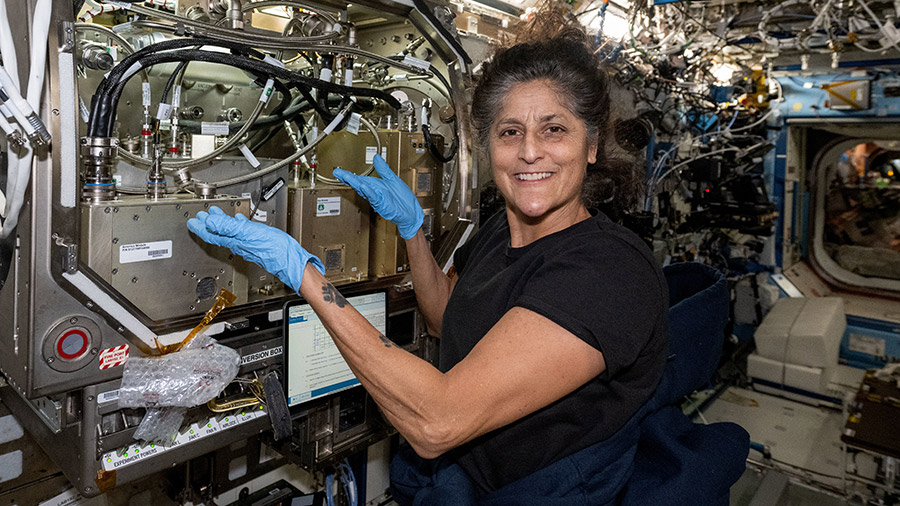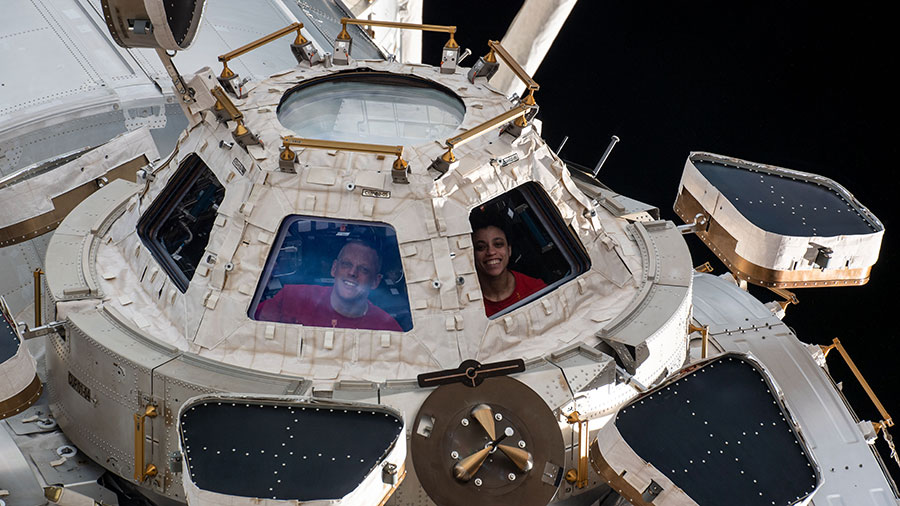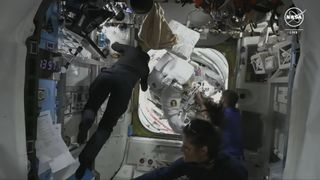
Space botany and lunar construction techniques once again dominated the science schedule aboard the International Space Station on Tuesday. The orbital crewmates are helping researchers plan future missions to the Moon, Mars, and beyond.
NASA Flight Engineer Jeanette Epps continued studying how microgravity and radiation affect thale cress plants at the molecular and cellular levels in the Kibo laboratory module. She collected and treated plant samples that were incubated inside the Plant Experiment Facility for preservation. At the end of the day’s two experiment runs, she preserved and stowed the samples in a science freezer where they will stay before being returned to Earth for further analysis. Results may inform space agricultural techniques to sustain crews venturing further into space and beyond low-Earth orbit.
NASA Flight Engineer Matthew Dominick explored ways to make cement on the lunar surface to help engineers learn how to build crew habitats in different gravity environments. He removed small simulated lunar cement sample bags that had cured overnight in a thermos and stowed them in a concrete kit for several weeks of hardening at ambient temperature. Afterward, he mixed more bags containing simulated lunar soil and other materials with a liquid solution, placed a bag with hot water in between them, then inserted the samples inside a thermos can for overnight incubation. The samples will be returned to Earth and examined to determine the space-created concrete’s microstructure and mechanical strength.
After the cement work, Dominick assisted NASA Flight Engineer Tracy C. Dyson in the Tranquility module relocating cargo to access the NanoRacks Bishop airlock. Next, Dominick mounted a pressure management device and connected power and data cables inside Tranquility ahead of Bishop’s depressurization. Bishop can be used for cargo stowage or external science operations. Dyson later removed sample cassettes from an advanced sample processor that supported a pair of pharmaceutical manufacturing studies.
NASA astronauts Mike Barratt from Expedition 71 and Butch Wilmore from Boeing’s Crew Flight Test had a light duty day spending a few moments on life support duties. NASA astronaut Suni Williams relaxed all day on Tuesday before joining her crewmate Wilmore at the end of their shift for a crew conference with Boeing flight controllers.
Station Commander Oleg Kononenko and Flight Engineer Nikolai Chub started their morning on maintenance tasks in the Zvezda service module. The duo then moved on transferring water delivered aboard the Progress 89 cargo craft and performing leak checks on the resupply ship. Flight Engineer Alexander Grebenkin also had most of the day off taking time out for medical checks and updating operational documents shipped on Progress.
Learn more about station activities by following the space station blog, @space_station and @ISS_Research on X, as well as the ISS Facebook and ISS Instagram accounts.
Get weekly video highlights at: https://roundupreads.jsc.nasa.gov/videoupdate/
Get the latest from NASA delivered every week. Subscribe here: www.nasa.gov/subscribe




